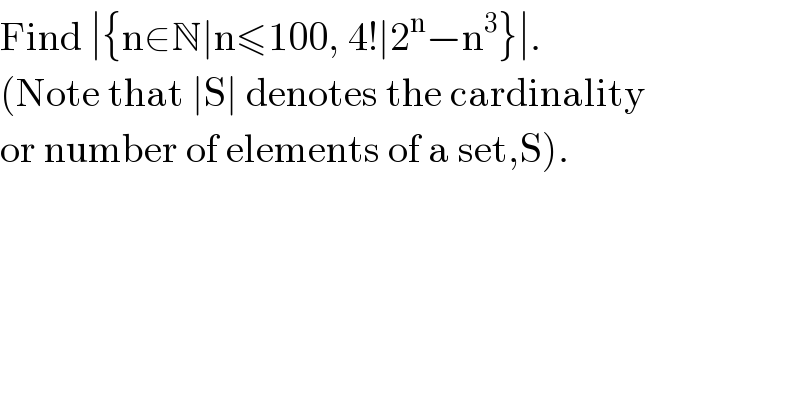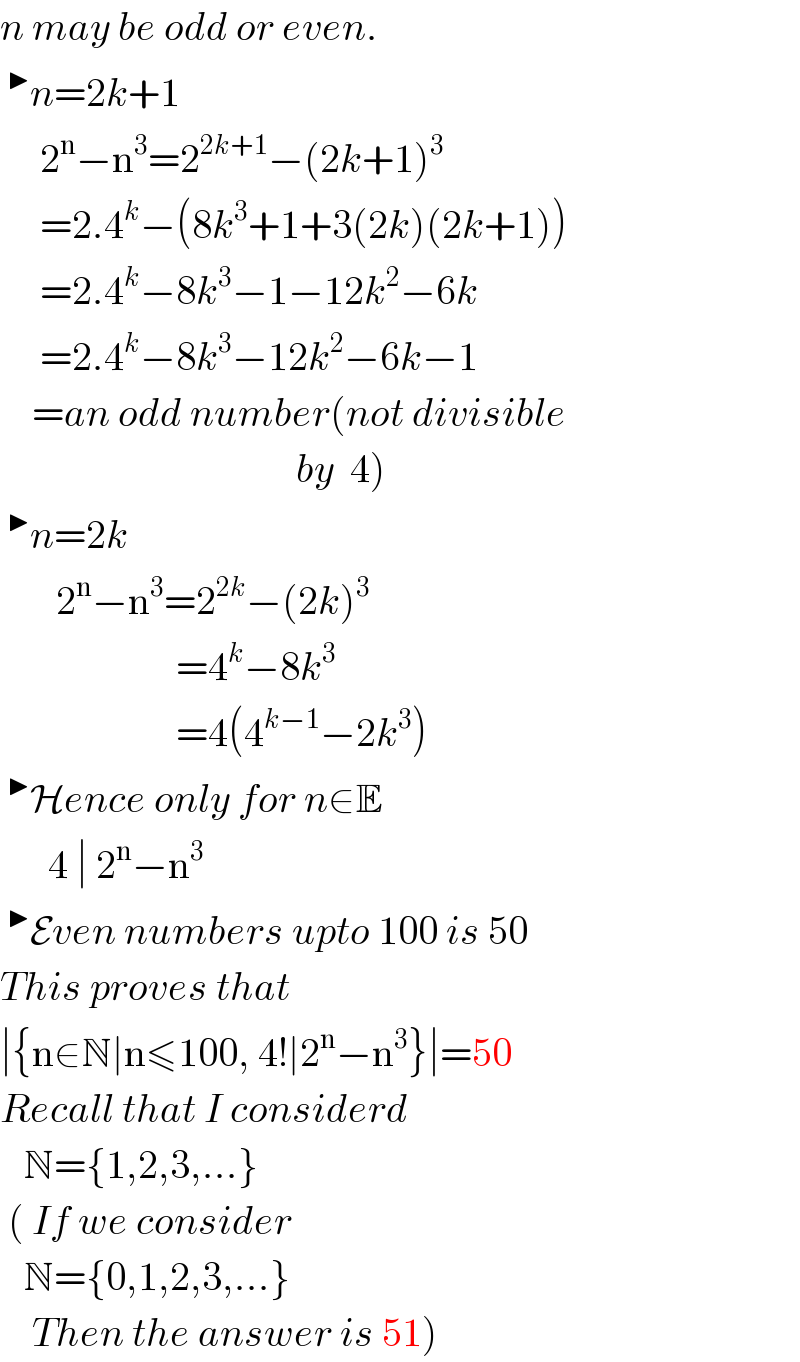
Question and Answers Forum
Question Number 112011 by Aina Samuel Temidayo last updated on 05/Sep/20

Answered by Rasheed.Sindhi last updated on 07/Sep/20

Commented by Rasheed.Sindhi last updated on 07/Sep/20

Commented by kaivan.ahmadi last updated on 05/Sep/20

Commented by Rasheed.Sindhi last updated on 05/Sep/20

Commented by Aina Samuel Temidayo last updated on 06/Sep/20

Answered by Rasheed.Sindhi last updated on 09/Sep/20
![4! ∣ 2^n −n^3 24∣2^n −n^3 2^n ≡n^3 (mod 24) Let { ((2^n ≡u(mod 24))),((n^3 ≡v(mod 24)) :} [(n,(2^n mod 24_((u)) ),(n^3 mod 24_((v)) ),),(1,( 2),( 1),),(2,( 4),( 8),),(3,( 8),( 3),),(4,( 16),( 16),(u=v)),(5,( 8),( 5),),(6,( 16),( 0),),(7,( 8),( 7),),(8,( 16),( 8),),(9,( 8),( 9),),((10),( 16),( 16),(u=v)),((11),( 8),( 11),),((12),( 16),( 0),),((13),( 8),( 13),),((14),( 16),( 8),),((15),( 8),( 15),),((16),( 16),( 16),(u=v)),((17),( 8),( 17),),((18),( 16),( 0),),((19),( 8),( 19),),((20),( 16),( 8),),((21),( 8),( 21),),((22),( 16),( 16),(u=v)),((23),( 8),( 23),),((24),( 16),( 0),) ] Values of n for which u=v or 2^n ≡n^3 (mod 24) or in other words 4! ∣ 2^n −n^3 are: 4,10,16,...(6n−2).. This is an AP upto 100 of which are 17 terms. ∴ 4! ∣ 2^n −n^3 has 17 solutions for n∈N ∧ n≤100.](Q112297.png)
Commented by Aina Samuel Temidayo last updated on 07/Sep/20

Commented by Rasheed.Sindhi last updated on 09/Sep/20

Commented by Aina Samuel Temidayo last updated on 09/Sep/20

